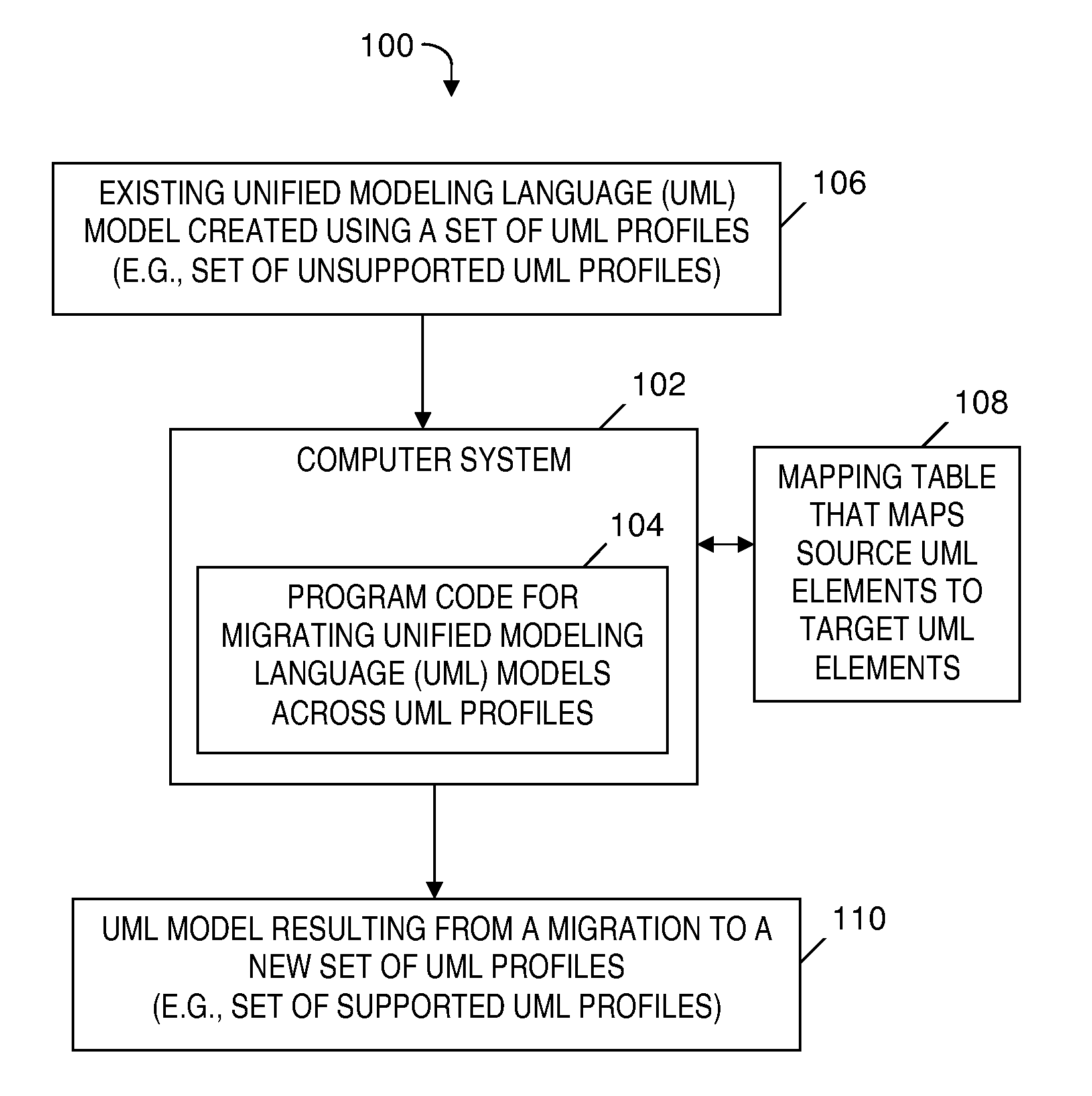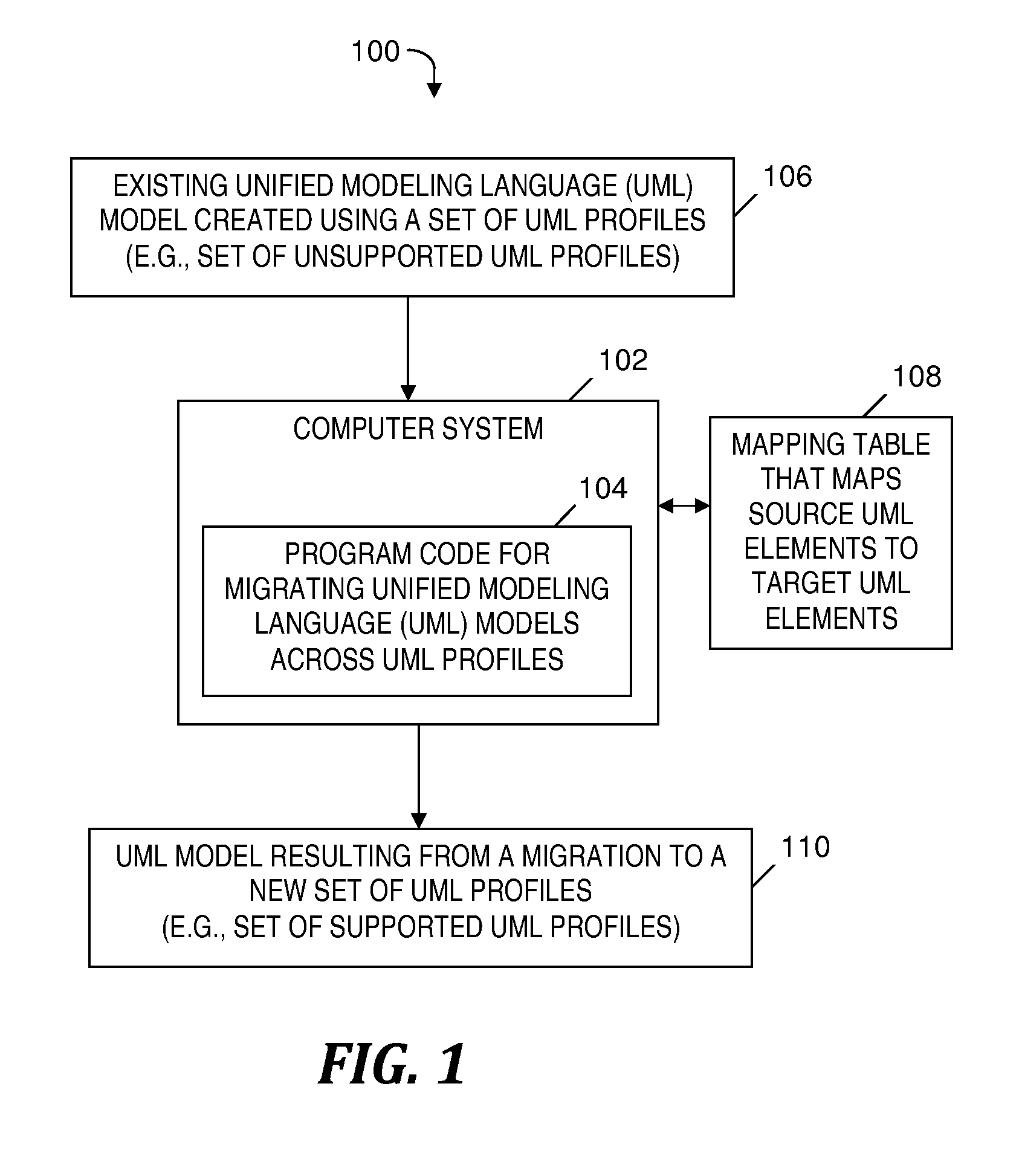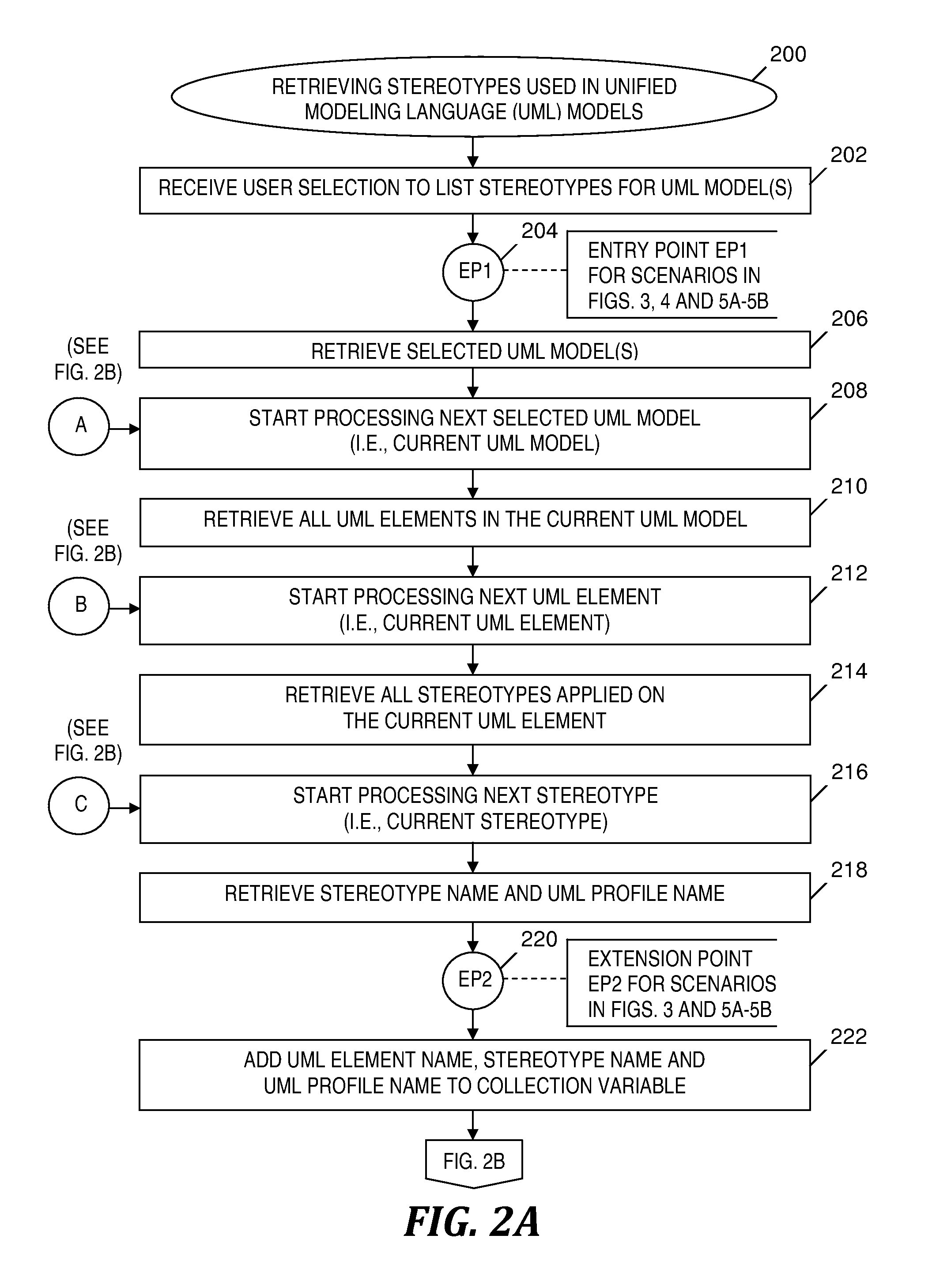Migrating unified modeling language models across unified modeling language profiles
a technology of unified modeling and profiles, applied in the field of data processing methods and systems, can solve the problems of affecting the life requiring substantial effort and cost, and not being able to ensure that the software component previously developed using the older version of the development tool is supported by the supplier, so as to avoid substantial effort and cost, and extend the lifetime of high-value software assets.
- Summary
- Abstract
- Description
- Claims
- Application Information
AI Technical Summary
Benefits of technology
Problems solved by technology
Method used
Image
Examples
Embodiment Construction
Overview
[0021]Embodiments of the present invention may provide a system and method for migrating a UML model that had been created using old, unsupported, incompatible UML profiles to a new set of UML profiles, where the new set of UML profiles are supported by a supplier of a software component represented by the UML model, and where the new set of UML profiles is not a revision of old UML profiles. That is, the migration technique of the present invention is not disclosing a migration of UML models or UML profiles from an old version of UML (e.g., UML2 1.x) to a new version of UML (e.g., UML2 2.0) that involves adding a limited number of stereotypes to an existing set of stereotypes. Instead, the migration technique of the present invention may replace each and every old stereotype with a new set of stereotypes and may result in the definition of a new meta-model itself, which has a different name, extends from a different meta-class, and has different semantics from the UML mode...
PUM
 Login to View More
Login to View More Abstract
Description
Claims
Application Information
 Login to View More
Login to View More - R&D
- Intellectual Property
- Life Sciences
- Materials
- Tech Scout
- Unparalleled Data Quality
- Higher Quality Content
- 60% Fewer Hallucinations
Browse by: Latest US Patents, China's latest patents, Technical Efficacy Thesaurus, Application Domain, Technology Topic, Popular Technical Reports.
© 2025 PatSnap. All rights reserved.Legal|Privacy policy|Modern Slavery Act Transparency Statement|Sitemap|About US| Contact US: help@patsnap.com



